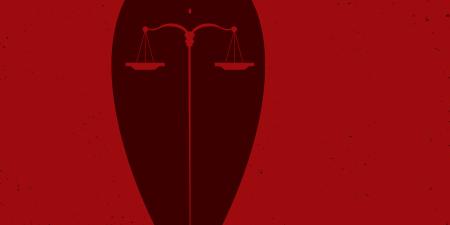Abstract
Many health systems have adopted online patient portals that allow patients to easily view their health records. As a result, notes written by health care professionals are increasingly read by both clinicians and patients, and clinicians in specialties that routinely involve sensitive information (eg, mental health care) have had to construct notes in a manner that respectfully promotes therapeutic relationships with patients. This article discusses whether ethics consultation services should share notes with patients through online portals and ways to handle practical implementation challenges. In support of sharing notes, this article appeals to an existing right that patients have to access their health record and suggests that sharing ethics consultation notes might help patients understand key clinical ethics concepts and practices.
Introduction
Patient portals are online websites that give patients convenient and secure access to their personal health information1 and are available in an expanding number of medical practices.2 Portals frequently include summaries of doctor visits, medication information, and lab results; some allow patients to access in-patient progress notes, send messages to physicians, schedule appointments, and make online payments. Some institutions, including the National Institutes of Health Clinical Center, have begun sharing ethics consultation notes with patients.3 Given these developments, increased discussion of the benefits and burdens of sharing ethics consultation notes is needed. In the remainder of this article, we describe the movement to increase patient access to health records through online portals and argue why consultation services should embrace it. In particular, we articulate 2 benefits of increased patient access. First, providing patients access to some of their ethics consultation notes through online portals would facilitate patients’ exercise of an existing, but currently underutilized,4,5 right to access their health records. Second, easily accessible and understandable ethics consultation notes might help patients appreciate the ethical concepts that are meant to guide clinical practice. Finally, we describe a few ways to meet practical implementation challenges.
Current Documentation and Sharing Practices
Currently, most ethics consultation services document notes in internal service records and in patients’ electronic health records (EHRs).6,7 The amount of detail placed in the EHR varies; one prominent model7 recommends documenting detailed notes in the service’s internal records and concise notes (summary analysis and recommendations) in the EHR.7 Patients have a right to access information in the EHR but not in internal service records. However, few patients access information in the EHR because of practical challenges in requesting these records.4,5
As the use of patient portals has become more prevalent, OpenNotes, an international movement committed to encouraging the use and studying the effects of patient portals, has developed.8 The movement has grown quickly since its inception in 2010 following a landmark study involving roughly 25 000 patients.9,10 That study revealed that most patients who accessed notes through a patient portal reported better understanding of their condition, improved self-care, increased medication adherence, and increased feelings of control over their care.9,10 Physicians also experienced benefits, most commonly citing strengthened relationships with their patients, and most reported no difficulties in their practice.10 Since that time, a growing body of evidence supports sharing notes with patients to improve patient engagement,11,12,13,14,15 enhance patient safety,16,17,18 and foster trusting relationships and shared decision making.19,20,21,22
Ethics Consultation Services Should Share Consultation Notes
Although clinicians increasingly share EHR notes through the portal,23 there has been little discussion of whether ethics consultation services should do the same. One strong reason for doing so is to promote patients’ existing rights. Indeed, patients have a legal right to access their EHR,24 although some might be unaware of this right25 or might find the requesting processes burdensome,4,5 making access difficult. Thus, including ethics consultation notes in online portals would promote the exercise of an existing right—one recently emphasized in the 21st Century Cures Act.26
Embracing this increased transparency could also benefit patients and ethics consultation services in other ways. First, it would inform patients of the role of ethics consultations, thereby helping them understand key concepts of clinical ethics. For example, a note that explicitly lays out value trade-offs between aggressive and palliative treatment options might help patients and their families understand and appreciate deliberation about goals of care, the process of balancing the benefits and burdens of treatment options, and the resolution of disagreements due to different perspectives and opinions. A note like this could be beneficial during an acute illness in the intensive care unit or when a patient with a chronic disease enters the terminal phase of the condition. Sharing notes could also dispel patient misconceptions about ethics consultation services (eg, that they take over the decision-making function27).
A small percentage of patients report worrying more, feeling judged, or experiencing other discomfort after reading their psychotherapy notes online.
Some might question whether regularly sharing ethics consultation notes would on balance be beneficial, given that ethics consultations frequently involve vulnerable patients and families, distressed clinicians, and sensitive information.28 Members of other specialties, particularly adolescent health29 and mental health care,30 have expressed similar concerns related to maintaining patient privacy and preserving therapeutic relationships. For instance, a recent study found that a small percentage of patients report worrying more, feeling judged, or experiencing other discomfort after reading their psychotherapy notes online.31 Although concerns about regularly sharing ethics consultation notes are justified, we maintain that they should not prevent sharing notes entirely. Instead, they should motivate the development of best practices for minimizing harms and policies to guide decisions about selectively including notes in the EHR or patient portal.
Suggestions for Documentation in the Patient Portal
When documenting notes in patient portals, ethics consultation services will need to decide upon which kinds of and how much information should be shared. We suggest that the patient portal should, as a rule, match the EHR note in both type and volume of information, although we note 2 exceptions in which omitting notes from the portal or sharing summary versions of notes in the portal might be appropriate. And, on occasion, omitting notes from both the EHR and the portal might be advisable. (See Supplementary Appendix Table for examples.)
First, a note might be inappropriate for the portal because the ethics consultation doesn’t relate to the patient’s care. For instance, hospital policy questions wherein no patient is named are obviously excluded. Whether a similar policy question should be excluded if it arises within the context of a particular patient’s care is less clear. Hospitals and consultation services must therefore develop criteria to define when an ethics consultation properly relates to the care of a patient such that it is appropriate for inclusion in the portal.
Second, a note might be inappropriate for the portal because it undermines recommendations provided or is potentially harmful to patients. For example, if a consultation involves discussion of whether to disclose information to a patient or their surrogate decision maker and disclosure is considered inadvisable, then the note should be omitted from the portal. Consultants could designate the note as “hidden” from patients and require justification for its being viewed by other clinicians, similar to the practices of clinicians documenting psychotherapy notes.30 In other cases, it might be advisable to share only some aspects of the consult with patients. For instance, an interdisciplinary ethics consultation may be requested to craft a plan to assist clinicians in handling challenging patient encounters and inappropriate behaviors. The ethics consultant’s report could include several observations or recommendations, some of which might be constructive for both clinicians and patients to read, others of which might offend or unnecessarily exacerbate existing tensions if the patient reads them. In these cases, 2 versions of a consultation note could be authored: a comprehensive note in the EHR aimed at relevant clinicians and a summary note in the portal geared toward patients.29 This option promotes effective communication between clinicians and patients in a way that omitting a note from the EHR or portal would not. One drawback to this strategy is that it would increase consultants’ documentation burden and could be confusing to clinicians.
Defining the maximum burden that is acceptable if notes are included in the portal—which serves as a threshold for omitting notes from the portal—will vary. The maximum burden from inclusion of notes should be greater than mere clinician discomfort, but the threshold should not be so high that potential requestors hesitate to request ethics consultations. For example, if the expected burden of including notes in the portal is very high, some clinicians might be more hesitant to request future consultations.32 Well-established consultation services might use higher thresholds for withholding notes compared to services still building trust among clinicians, which might adopt lower thresholds. Individual decisions to withhold notes would likely depend heavily on individual consultants’ prudential judgment and guidance from institutional policies.
Practical Documentation Strategies
In cases in which ethics consultation notes will be made available in the patient portal, consultants can mitigate potential challenges by adapting guidance from clinicians with experience sharing notes29,31,33,34,35 and by taking certain precautionary steps before, during, and after documentation.
Before documenting notes, consultants should generally notify the patient of the consultation’s initiation (preferably in person) and involve them whenever possible. Although this procedure is part of existing professional recommendations,27,28 it is newly salient when sharing notes with patients. Making patients aware that a consultation has occurred can prevent the possibility of their feeling blindsided, confused, or frustrated, as has occurred after patients discover new, unanticipated information in their clinical notes.36,37 Thus, increased patient involvement might mitigate patients’ negative reactions to reading ethics consultation notes. It could also lead to more frequent challenging conversations with patients, illuminating the need for more formalized training of ethics consultants in interpersonal skills. Cultivation of these skills has long been encouraged by professional organizations,27,28 but few consultants receive formal training.6 Thus, patient access to ethics consultation notes might motivate adoption of training in professionally endorsed communication skills.
Although ideal, prior notification and involvement of patients in ethics consultations is not always feasible. Thus, it is also important to address potential patient concerns when drafting a note. Patients’ negative reactions might be minimized by including a preface to the notes that (1) describes the nature and purpose of ethics consultations, (2) alerts patients that they might be unaware that an ethics consultation has been requested, and (3) provides information for contacting the ethics consultation service about any questions or concerns. Notes that are written with simple, descriptive language that is supportive and nonjudgmental are least likely to offend patients.33,34 Consultants should adopt good writing practices, such as reviewing notes carefully to ensure that they are free of errors and convey their intended meaning.
After documenting notes in the portal, it might be advisable for consultants to provide the patient and relevant clinicians opportunities for feedback or discussion of notes and to be prepared to make appropriate corrections.16,33
Limitations
We acknowledge there are important issues not mentioned or discussed adequately in this short paper. For instance, there might be fundamental disagreements about the nature (and legal status) of a consultation note. Some might argue that consultation notes “belong” solely to the requestor of the consultation and that she alone decides with whom they are shared. This view challenges our assumption that patients have a right to view their ethics consultation notes. Another important issue not discussed is whether and how sharing notes might affect legal liability associated with ethics consultations.
Nevertheless, we encourage transparency about ethics consultations in the patient portal when possible and see a need for conversation around this important issue. Future discussion could benefit from a detailed description of the challenges of sharing ethics consultation notes and from a discussion of best practices developed by services currently sharing notes.
Conclusion
As patients become more familiar with accessing their health records through patient portals, ethics consultants should consider how to take advantage of this communication pathway with patients through inclusion of ethics consultation notes in the portal. Inclusion of notes offers the possibility that patients will become more familiar with the work of clinical ethics consultants and that ethics consultation will become more effective in achieving its goals of improving patient care.
References
-
Office of the National Coordinator for Health Information Technology. What is a patient portal? https://www.healthit.gov/faq/what-patient-portal. Updated September 29, 2017. Accessed November 26, 2019.
-
Boodman SG. Electronic medicine can send you test results quickly: but what if they’re scary? Washington Post. March 26, 2018. https://www.washingtonpost.com/national/health-science/electronic-medicine-can-send-you-test-results-quickly-but-what-if-theyre-scary/2018/03/26/70fb1032-15a7-11e8-92c9-376b4fe57ff7_story.html. Accessed November 26, 2019.
-
OpenNotes. OpenNotes at the NIH Clinical Center. https://www.opennotes.org/opennotes-at-the-nih-clinical-center/. Published July 8, 2019. Accessed August 21, 2019.
-
Paavola A. 1 in 3 patients lack easy access to medical records: 6 things to know. Becker’s Health IT. September 19, 2017. https://www.beckershospitalreview.com/healthcare-information-technology/1-in-3-patients-lack-easy-access-to-medical-records-6-thing-to-know.html. Accessed March 26, 2020.
-
Lye CT, Forman HP, Gao R, et al. Assessment of US hospital compliance with regulations for patients’ requests for medical records. JAMA Netw Open. 2018;1(6):e183014.
- Fox E, Myers S, Pearlman RA. Ethics consultation in United States hospitals: a national survey. Am J Bioeth. 2007;7(2):13-25.
- Bramstedt KA, Jonsen AR, Andereck WS, McGaughey JW, Neidich AB. Optimising the documentation practices of an ethics consultation service. J Med Ethics. 2009;35(1):47-50.
-
OpenNotes. Our mission. https://www.opennotes.org/about/. Accessed November 4, 2019.
- Delbanco T, Walker J, Darer JD, et al. Open notes: doctors and patients signing on. Ann Intern Med. 2010;153(2):121-125.
- Delbanco T, Walker J, Bell SK, et al. Inviting patients to read their doctors’ notes: a quasi-experimental study and a look ahead. Ann Intern Med. 2012;157(7):461-470.
-
Wright E, Darer J, Tang X, et al. Sharing physician notes through an electronic portal is associated with improved medication adherence: quasi-experimental study. J Med Internet Res. 2015;17(10):e226.
-
Woods SS, Schwartz E, Tuepker A, et al. Patient experiences with full electronic access to health records and clinical notes through the My HealtheVet Personal Health Record Pilot: qualitative study. J Med Internet Res. 2013;15(3):e65.
-
Walker J, Leveille S, Bell S, et al. OpenNotes after 7 years: patient experiences with ongoing access to their clinicians’ outpatient visit notes. J Med Internet Res. 2019;21(5):e13876.
- DesRoches CM, Bell SK, Dong Z, et al. Patients managing medications and reading their visit notes: a survey of OpenNotes participants. Ann Intern Med. 2019;171(1):69-71.
- Mishra VK, Hoyt RE, Wolver SE, Yoshihashi A, Banas C. Qualitative and quantitative analysis of patients’ perceptions of the patient portal experience with OpenNotes. Appl Clin Inform. 2019;10(1):10-18.
- Bell SK, Gerard M, Fossa A, et al. A patient feedback reporting tool for OpenNotes: implications for patient-clinician safety and quality partnerships. BMJ Qual Saf. 2017;26(4):312-322.
-
Bell SK, Folcarelli P, Fossa A, et al. Tackling ambulatory safety risks through patient engagement: what 10,000 patients and families say about safety-related knowledge, behaviors, and attitudes after reading visit notes [published online ahead of print April 27, 2018]. J Patient Saf.
- Kelly MM, Hoonakker PLT, Dean SM. Using an inpatient portal to engage families in pediatric hospital care. J Am Med Inform Assoc. 2017;24(1):153-161.
- Wolff JL, Darer JD, Berger A, et al. Inviting patients and care partners to read doctors’ notes: OpenNotes and shared access to electronic medical records. J Am Med Inform Assoc. 2017;24(e1):e166-e172.
- Bell SK, Mejilla R, Anselmo M, et al. When doctors share visit notes with patients: a study of patient and doctor perceptions of documentation errors, safety opportunities and the patient-doctor relationship. BMJ Qual Saf. 2017;26(4):262-270.
- Fossa AJ, Bell SK, DesRoches C. OpenNotes and shared decision making: a growing practice in clinical transparency and how it can support patient-centered care. J Am Med Inform Assoc. 2018;2(9):1153-1159.
-
Grossman LV, Creber RM, Restaino S, Vawdrey DK. Sharing clinical notes with hospitalized patients via an acute care portal. AMIA Annu Symp Proc. 2018;2017:800-809.
-
OpenNotes. More than 40 million patients can access their clinicians’ visit notes via secure portals at 200 health systems. https://www.opennotes.org/news/more-than-40-million-patients-can-access-their-clinicians-visit-notes-via-secure-portals-at-200-health-systems/. Published July 2, 2019. Accessed August 21, 2019.
-
Health Insurance Portability and Accountability Act of 1996, Pub L No. 104-191, 100 Stat 2548.
- Fowles JB, Kind AC, Craft C, Kind EA, Mandel JL, Adlis S. Patients’ interest in reading their medical record: relation with clinical and sociodemographic characteristics and patients’ approach to health care. Arch Intern Med. 2004;164(7):793-800.
-
Jason C. Key reminders of new data regulations for 21st Century Cures Act. EHR Intelligence. October 24, 2019. https://ehrintelligence.com/news/key-reminders-of-new-data-regulations-for-21st-century-cures-act. Accessed March 26, 2020.
-
Fox E, Berkowitz KA, Chanko BL; Powell T; National Center for Ethics in Health Care. Ethics consultation: responding to ethics questions in health care. https://www.ethics.va.gov/ECprimer.pdf. Accessed March 26, 2020.
-
Arnold RM; American Society for Bioethics and Humanities. Core Competencies for Healthcare Ethics Consultation: A Report of the American Society for Bioethics and Humanities. 2nd ed. Chicago, IL: American Society for Bioethics and Humanities; 2011.
-
Bourgeois FC, DesRoches CM, Bell SK. Ethical challenges raised by OpenNotes for pediatric and adolescent patients. Pediatrics. 2018;141(6):e20172745.
-
Dobscha SK, Denneson LM, Jacobson LE, Williams HB, Cromer R, Woods S. VA mental health clinician experiences and attitudes toward OpenNotes. Gen Hosp Psychiatry. 2016;38:89-93.
- O’Neill S, Chimowitz H, Leveille S, Walker J. Embracing the new age of transparency: mental health patients reading their psychotherapy notes online. J Ment Health. 2019;28(5):527-535.
- DuVal G, Clarridge B, Gensler G, Danis M. A national survey of US internists’ experiences with ethical dilemmas and ethics consultation. J Gen Intern Med. 2004;19(3):251-258.
- Klein JW, Jackson SL, Bell SK, et al. Your patient is now reading your note: opportunities, problems, and prospects. Am J Med. 2016;129(10):1018-1021.
- Kahn MW, Bell SK, Walker J, Delbanco T. Let’s show patients their mental health records. JAMA. 2014;311(13):1291-1292.
- Denneson LM, Pisciotta M, Hooker ER, Trevino A, Dobscha SK. Impacts of a web-based educational program for veterans who read their mental health notes online. J Am Med Inform Assoc. 2019;26(1):3-8.
- Pisciotta M, Denneson LM, Williams HB, Woods S, Tuepker A, Dobscha SK. Providing mental health care in the context of online mental health notes: advice from patients and mental health clinicians. J Ment Health. 2019;28(1):64-70.
- Cromer R, Denneson LM, Pisciotta M, Williams H, Woods S, Dobscha SK. Trust in mental health clinicians among patients who access clinical notes online. Psychiatr Serv. 2017;68(5):520-523.



